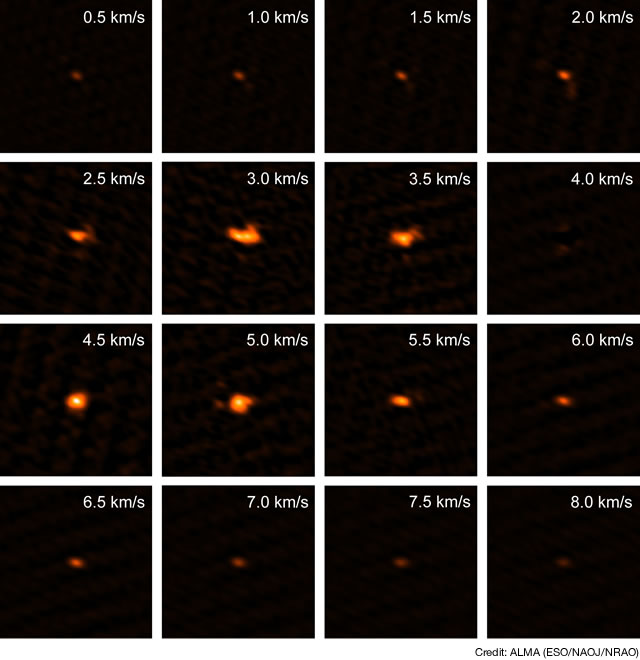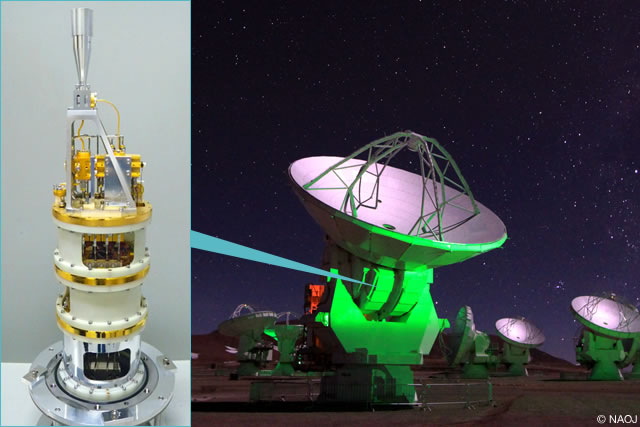Successful ALMA First Radio Imaging with Band 4 Receiver
| Topics
ALMA telescope successfully captured its first radio image with Band 4 receiver developed by Japan in an ALMA test observation conducted in January 2013. The target object was IRAS16293-2422, a protostar (baby star) in the constellation of Ophiuchus. The telescope received radio emission from carbon sulfide (CS) molecules surrounding the star and imaged their distribution.


The target of this Band 4 receiver test observation was a protostar IRAS16293-2422 about 400 light years away toward the direction of the constellation of Ophiuchus with six 7-m antennas developed by Japan. The baby protostar is surrounded by a large amount of gas that served as a seedbed for the star. This test observation captured radio emission from carbon sulfide (CS) molecule contained in the gas at 147 GHz. Since CS molecule produces strong radio emission in a high gas density region, it is suitable for the observation of gas being soaked into a nearby baby star. Other prospective radio sources in the frequency range covered by the Band 4 receiver includes formaldehyde (H2CO), deuterium compound, and carbon chain molecule (a linkage of carbon atoms), which are found in large quantities in cold star forming regions.
Yoshinori Uzawa, the leader of the Band 4 development team says, “I am so happy to hear the news of the first successful radio imaging with our Band 4 receiver. During the development phase, we faced many technical challenges, but we pulled together as a team to solve each problem and finally reached here. We expect our receiver will be used by many astronomers around the world to solve the mysteries of the universe.”